Magic Decks to Teach New Players
By Jonathan Zucchetti
Teaching a new player Magic can be daunting, especially young kids or other people unfamiliar with intricate strategic games. Magic in the modern era has many keywords, rules, and interactions that can make the task gargantuan.
To make the task easier, here are a set of 5 kitchen table decks that provide rich gameplay, while limiting the number of ideas to learn. These decks are inexpensive, the sort of decks you can happily shuffle up, lend out, and even give away to folks you are bringing into the MTG community. Each deck can be purchased for $4-$7.
They are all 40-cards, mono-color lists centred around one specific theme and built without any kind of legality restriction. The decks are a sandbox in which new players can get access to a condensed experience of Magic. All five decks focus on one core strategy or gameplay element and all of the cards in them aim towards said strategy.
If you like the decks, you can easily paste in the lists from Moxfield at manapool.com/add-deck and buy these inexpensive builds in a couple clicks.
Mono White
The white deck is powered by 16 basic Plains, and the spells in the deck are conceptually divided into two halves.
Half of the spells are composed of life-gaining engines. Impassioned Orator will net us one life whenever another creature enters the battlefield under our control. Dawnhart Geist synergizes with enchantments, which are a substantial part of our strategy. We can also improve our life total with Orim’s Prayer, an enchantment that will mitigate the damage coming from incoming attackers.
The other half of the deck contains life gain payoffs, cards that give an additional reward whenever we gain life. Griffin Aerie increases our flock whenever we gain 3 or more life during turn; Dawn of Hope keeps our cards flowing and, in later stages of the game, it can also turn into a token-creating machine. Path of Bravery grants us the best of both worlds: it buffs our creatures after we have enlarged our life total while also rewarding us with life points whenever we attack.
The strongest cards of the deck are Ajani’s Pridemate and Celestial Unicorn. These creatures are the ones that benefit the most from all the life gain we have going. By simply acquiring raw stats, they turn into threats that will quickly end the game left unanswered.
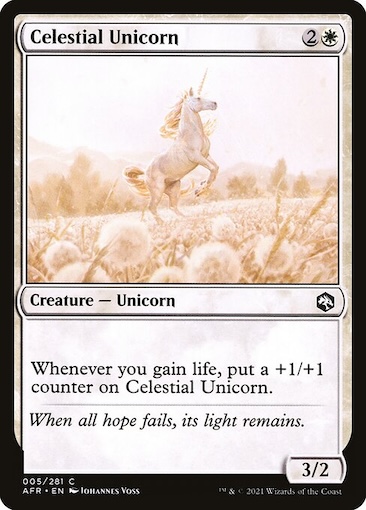
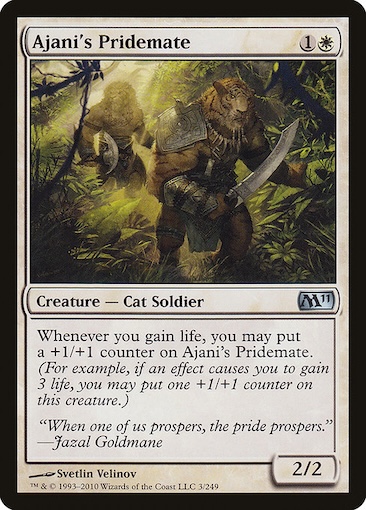
All of these cards connect to to build our strategy – gain life early and take advantage of life gain synergies towin through combat damage. We do especially well against aggressive decks, since our life gain neutralizes their fast push and leaves them facing our growing board of creatures as the game progresses.
The key features of this deck are life gain effects and enchantments. We set up a way to consistently gain life, so that our threats can grow bigger and bigger each turn. Enchantments cover a transversal role: on one hand they can add to the life gain engines, in the forms of Orim’s Prayer and Dawnhart Geist. On the other hand, they also function as payoffs, with Griffin Aerie providing more bodies (and augmenting Impassioned Orator), Dawn of Hope netting us cards (and also even more creature tokens if the game goes long enough) and Path of Bravery helping us close the game quickly.
Mono Blue
The blue deck we designed combines counterspells and flying creatures, to give new Magic players a taste of some of the blue mage fundamentals.
For countermagic, we include Quench and Cancel, to let us mitigate our opponent’s early onslaught, or to stop their later spells from upsetting our game plan.
Paired with the permission spells, our creatures all have the Flying keyword, which makes them much more difficult to defend against, and lets us pick and choose which spells to counter since we can ignore ground creatures if we are on the offensive.
Starting from the cheapest ones available to us, Cloudkin Seer will replace itself in our hand, while Oko’s Accomplices trades this ability for two additional points of toughness. Our more expensive creatures are Darkslick Drake at 4 mana and Air Elemental, a 5 mana 4/4 which can threaten to end games very quickly if it isn’t dealt with.
This style of deck helps players learn to understand when to keep mana open for interactions and when to spend it to deploy creatures. They will learn a lot about the balance between stopping their opponent and presenting threats, gain confidence in some of the finer points of strategy in Magic.
They will also get to understand flying creatures, and move beyond the simpler dynamics of ground creatures smashing into each other. It’s also nice to have a flying deck in the mix, because it will avoid some complicated board states that can bog down the learning process.
This may be the most interesting deck in the mix from a learning perspective, because the player will have to make choices about when to attack, when to defend, when to counter, and how to calculate when attacking at low life totals will interact with their countermagic availability to squeak out wins.
Mono Black
The mono black deck wants to use life total as a resource.
Cards such as Dusk Legion Zealot and Sign in Blood trade some of our life for additional cards, while Feed the Swarm allows us to take care of basically any threat our opponent can present in exchange for a portion of our life.
To balance the life we are losing, we can rely on creatures with the Lifelink keyword, which will gain back what we’ve lost whenever they deal damage, either attacking or blocking. Child of Night, Charity Extractor and Blood Glutton will all get the work done efficiently.
Our main creature removal spell, Murder is the glue that keeps this deck together. Having access to an unconditional way to deal with problematic creatures is an unvaluable tool to have at our disposal.
This deck needs its pilot to be a bit brave. If played conservatively, it won’t shine as it could. Instead, when the player starts taking some risks and plan on getting back to a healthy life total with creatures (after spending said life total on getting to look at more cards or removing problematic permanents), then it’ll be able to showcase its true power.
It’s all about finding the right balance between the two poles of this deck. You can’t play too passive, without being willing to pay some life to get your deck going. At the same time, you can’t really take too many risks if you know you don’t have any way to gain back all the life you are losing: doing so would expose you to too many threats and wouldn’t be productive.
Mono Red
The fastest of all the decks is the monored build. This color is all about doing damage to our opponents as soon as possible, without giving them any chance to even react.
This idea of lightning-fast games is achieved through extremely cheap cards that can start generating pressure early. Fanatical Firebrand and Ghitu Lavarunner can be deployed in the first turns of the game and immediately subtract from our opponent’s life total. We can also count on direct damage spells such as Shock to get us even closer to victory.
A lot of work can be done by our 2 mana burn spells. Lightning Strike, Searing Spear and Volcanic Hammer will all deal 3 damage to whatever target we want them to, most probably our opponent’s face.
This deck calls to the most aggressive players out there. Every single card in this list wants to reduce our opponent’s life total to 0 as fast as possible, giving up on basically any other aspect of the game. If you are looking for a build that rewards you for your battle prowess, you might just have found it.
The red deck might seem as a “brainless” one: all in all, you are just pointing all the spells at your opponent, right? Well, that’s wrong. Like all the other decks discussed, it requires some good amount of strategy to really get it to shine.
Recklessly throwing all the damage at our opponent might work at times, but much more often it won’t get us anywhere. Instead, it is important to correctly use your resources, to know when to shoot directly at the opponent’s life total and when to pick off some annoying creatures. Given that many of the burn spells are instants, we really don’t have to rush them: let’s see what our opponent is up to and, whenever they get too greedy, let’s blow them out of the water chaining multiple spells all at once.
Mono Green
Last but absolutely not least is the mono green deck. While not including not even one instant and/or sorcery, this list is very similar to the red one. In fact, just like the previous strategy, this green deck wants to hit the board early on turn one with either Llanowar Elves or Elvish Mystic.
What really marks the difference between the two is the follow-up to the turn-1 play. Instead of planning on chaining together multiple low-cost spells, here we want to keep on adding to how much mana we have available. When we untap on turn 2 with 3 mana at disposal (2 lands and one of our elves), we really want to hit another ramp piece, such as Llanowar Visionary or Llanowar Tribe. Alternatively, we can rely on Elvish Visionary to see more cards and eventually get to this spot.
If everything lines up and we are able to pull these turns off, then we’ll be able to really get the party started. Or, to be more precise, to end it pretty quickly. The reward for all of our ramping are big, hard-hitting creatures such as Colossal Dreadmaw or Aurochs Herd, with the latter also being able to get us even more fire power as it enters the battlefield.
Any player that is really keen to play creature-based strategy will make this deck shine. If you like to ramp with your elves and spawn big threats really early, then you can for sure follow this pact to victory.
This deck is obviously all about creatures and two abilities in particular make it shine. All the elves that add mana are crucial to deploy our 6-mana bodies as early as turn 3. For this reason, we always want to keep a starting hand that has at least one of them. On the other hand, what makes said big creatures good is the Trample keyword, which allows them to power through opposing blocking creatures. Just creating a lot of bodies won’t prevent our opponents from being dealt damage or, at the very least, they’ll need a lot of them to stop just one of our incoming attacks.
Try Them Out, Change Them Up
These 5 lists can be a starting point for your take on the best decks to teach your friends! Use your old cards laying around, some bulk gifted by a friend or even cards coming from fresh-bought packs: everything goes and can be used to tweak them and shape this sandbox-like environment.
Give these decks a try and share them with your friends to get them started in Magic: all in all, the more we are, the better, even when talking about the MTG community!
Give us a shout if you find a way to make them better, or have a success story bringing a new friend into the game.
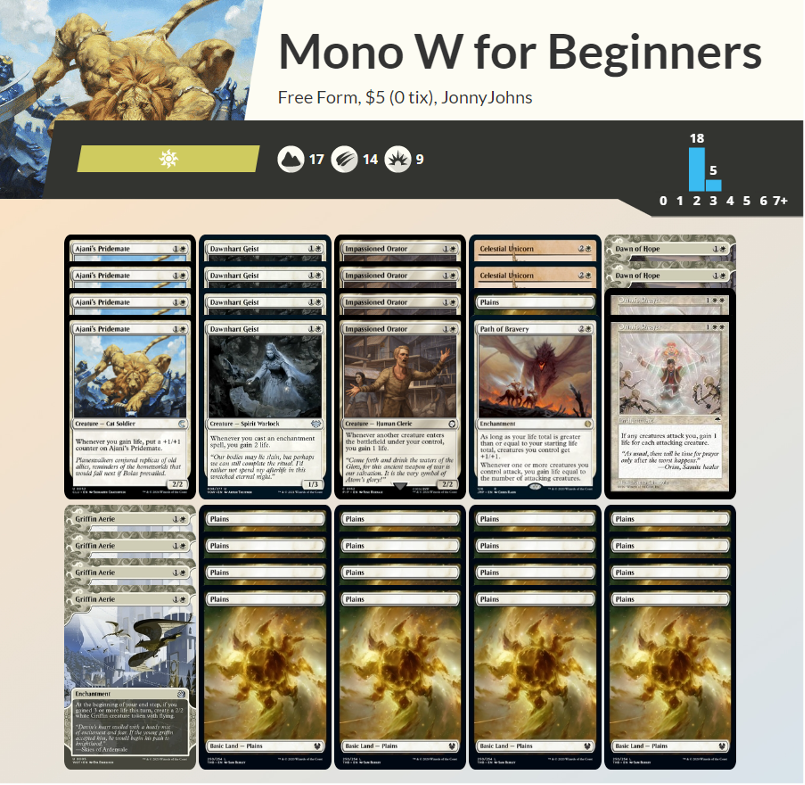 View on Moxfield
View on Moxfield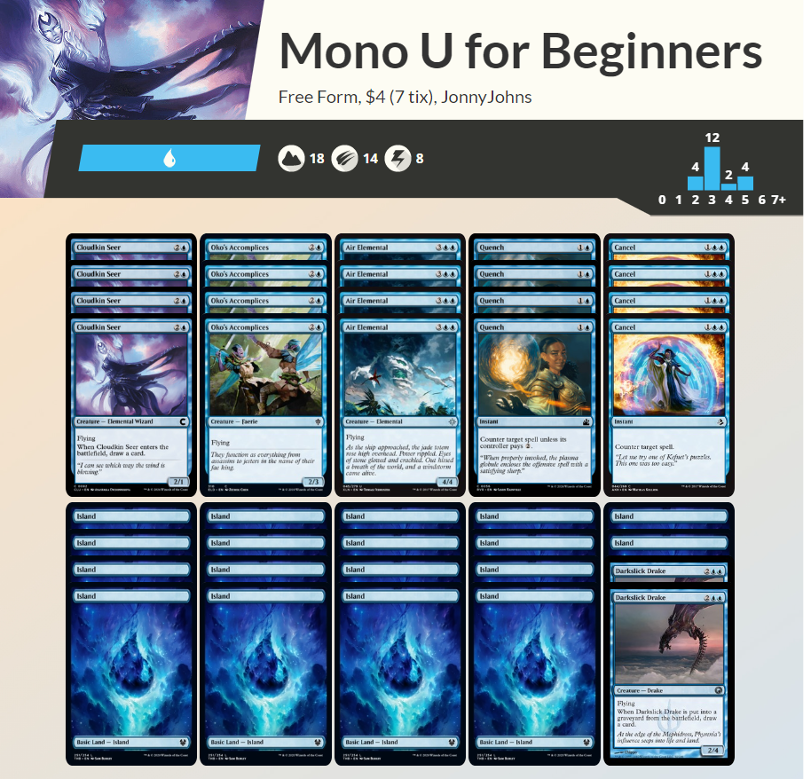 View on Moxfield
View on Moxfield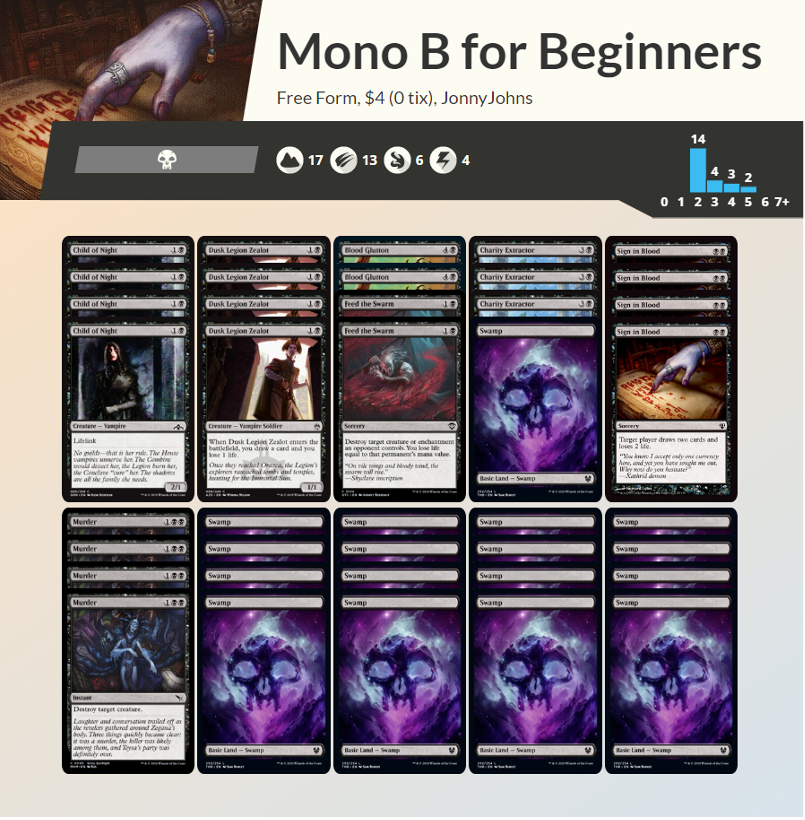 View on Moxfield
View on Moxfield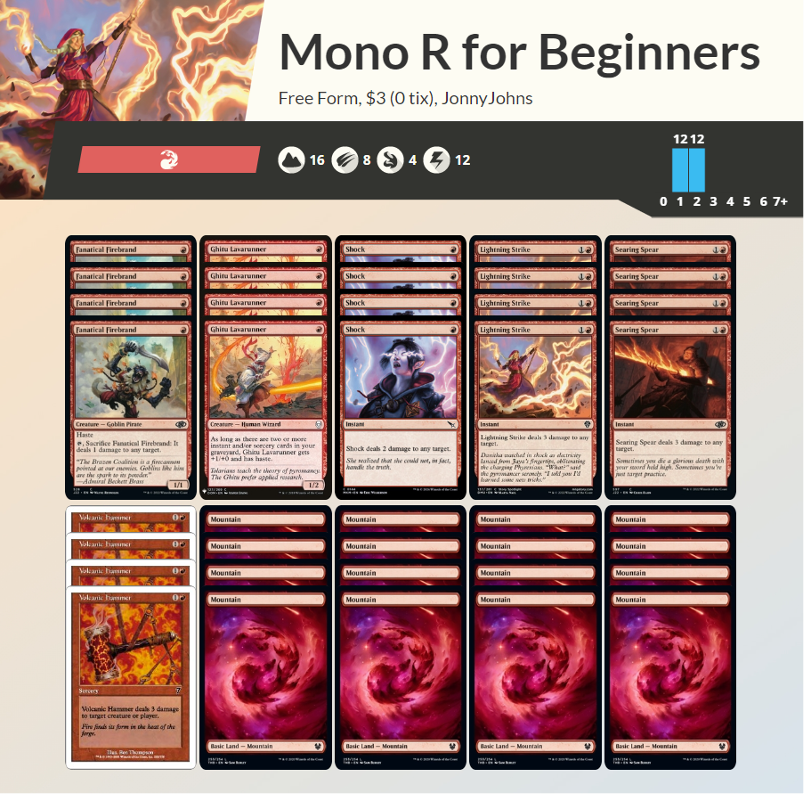 View on Moxfield
View on Moxfield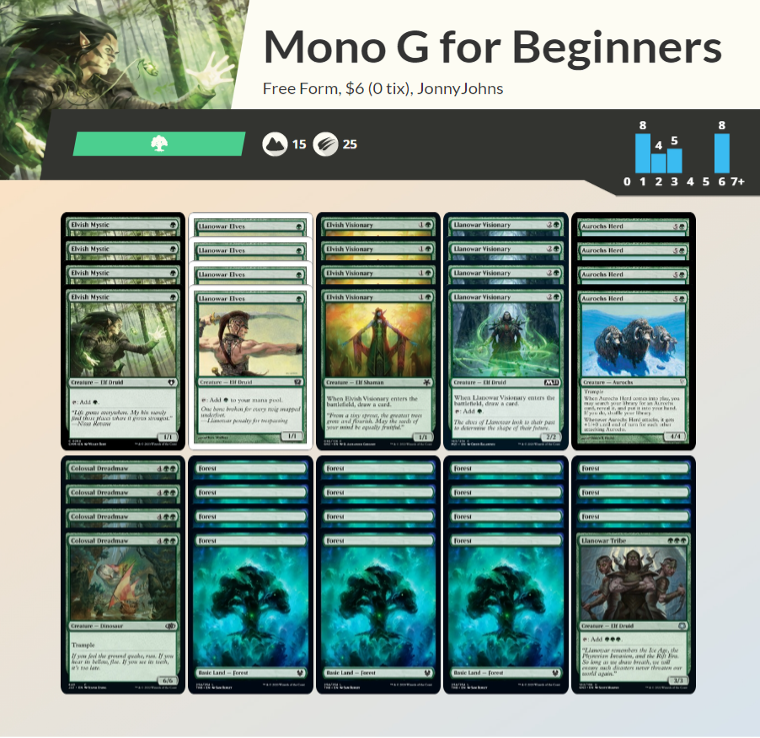 View on Moxfield
View on Moxfield